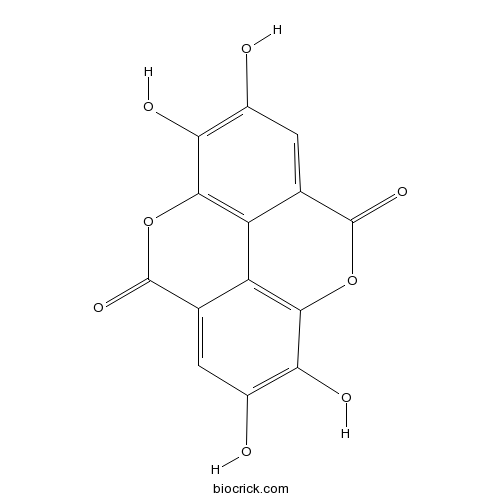Cynanchum wilfordii
Cynanchum wilfordii
1. The products in our compound library are selected from thousands of unique natural products; 2. It has the characteristics of diverse structure, diverse sources and wide coverage of activities; 3. Provide information on the activity of products from major journals, patents and research reports around the world, providing theoretical direction and research basis for further research and screening; 4. Free combination according to the type, source, target and disease of natural product; 5. The compound powder is placed in a covered tube and then discharged into a 10 x 10 cryostat; 6. Transport in ice pack or dry ice pack. Please store it at -20 °C as soon as possible after receiving the product, and use it as soon as possible after opening.
Natural products/compounds from Cynanchum wilfordii
- Cat.No. Product Name CAS Number COA
-
BCN5533
Ellagic acid476-66-4
Instructions

The suppressive effect of the three-herb extract mixture on vascular and liver inflammation in atherogenic diet with high fructose-fed mice.[Pubmed: 29772938]
Cynanchum wilfordii (Maximowicz) Hemsley (Apocynaceae), Arctium lappa L. var. rubescens Frivald (Asteraceae) and Dioscorea opposite Thunb (Dioscoreaceae) root extracts have been widely used as an alternative for intervening obesity.
Potential hypoglycemic effect of acetophenones from the root bark of Cynanchum wilfordii.[Pubmed: 29480065]
Three new acetophenones, named cynwilforones A-C (1-3), together with cynandione A (4) were isolated from the root bark of Cynanchum wilfordii (Maxim.) Hemsl. Their structures were deduced based on spectroscopic analysis and chemical methods. Compounds 1 and 4 exhibited potential hypoglycemic effects through inhibition of hepatic gluconeogenesis by down-regulating the expression of phosphoenolpyruvate carboxykinase and glucose-6-phosphatase. This is the first report that acetophenones from the root bark of C. wilfordii possesses potential hypoglycemic activity in vitro.
Discrimination of Cynanchum wilfordii and Cynanchum auriculatum by terahertz spectroscopic analysis.[Pubmed: 29430752]
Precise identification of botanical origin of plant species is crucial for the quality control of herbal medicine. In Korea, the root part of Cynanchum auriculatum has been misused for C. wilfordii in the herbal drug market due to their morphological similarities. Currently, DNA analysis using the polymerase chain reaction (PCR) method is employed to discriminate between these species.
Effects of Cynanchum wilfordii on osteoporosis with inhibition of bone resorption and induction of bone formation.[Pubmed: 29257324]
Cynanchum wilfordii Hemsley has been used for the treatment of musculoskeletal diseases in traditional Republic of Korean medicine. The present study investigated the effects of C. wilfordii water extract (CW) on postmenopausal osteoporosis. Female mice were used and randomly assigned into a normal group and three ovariectomized (OVX) groups: OVX with vehicle (OVX + vehicle); OVX with 17β‑estradiol (E2; 10 µg/kg/day); and OVX with CW (1 mg/kg/day). Oral administration of CW or E2 intraperitoneal injection began 9 weeks after OVX and continued for 3 weeks. Following sacrifice, bone histology, bone mineral density (BMD) and bone mineral content (BMC) of the femur were observed. Serum osteocalcin concentration was analyzed. In addition, the expression levels of osteoprotegerin (OPG) and osterix were evaluated in human osteoblast‑like Saos‑2 cells. In the lateral and medial epicondyles of the CW‑administrated group, dense and well‑formed bone marrow cells with reduced bone marrow pores were observed. CW decreased the number of tartrate resistant acid phosphatase‑positive multinucleated osteoclasts. BMD and BMC were increased following increased serum osteocalcin levels by CW treatment. The expression levels of OPG and osterix were upregulated by CW treatment in vitro. The results suggested that C. wilfordii has an advantageous effect on osteoporosis and possesses the potential to be used in osteoporosis treatment.
Cynanchum wilfordii Ameliorates Testosterone-Induced Benign Prostatic Hyperplasia by Regulating 5α-Reductase and Androgen Receptor Activities in a Rat Model.[Pubmed: 28953224]
None


